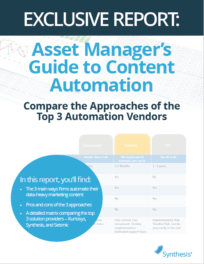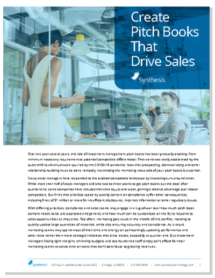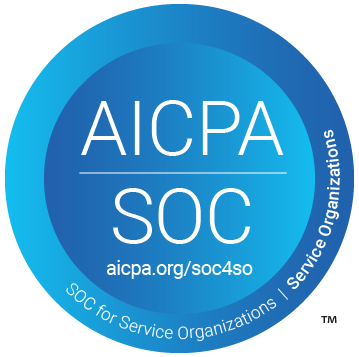Category Archives: Uncategorized
10 Best Practices for Tailored Shareholder Report Design
In our recent conversations with fund companies, we have been pleased to hear that the teams managing Tailored Shareholder Reports are taking this new SEC mandate as an opportunity to enhance their brand.
The detailed ins-and-outs of branding and branding-adjacent tasks can be unfamiliar to fund administrators and the teams involved in the regulatory and client reporting side of the investment management business.
Luckily, it’s not rocket science.
It is simply a process that helps to keep the firm’s look, feel, and messaging fresh. A rebrand can also be used to align a firm’s outward appearance with evolving trends, compliance needs, fund acquisitions, and/or strategic objectives. Rebranding can range from minor color and font changes to a complete overhaul of design and components – all things that must be accounted for in Tailored Shareholder Report planning.
However, in order to ensure all of these components are reflected in the TSR, an effective document design process is essential. Here, we offer a few of our best practices for creating a truly eye-catching and brand-defining Tailored Shareholder Report:
Benchmarking and the Tailored Shareholder Report: Staying on the SEC’s Good Side
 Similar to how it handled the Marketing Rule from a few years ago, the SEC is leaving much to the imagination for fund companies when implementing aspects of the Tailored Shareholder Reporting rule.
Similar to how it handled the Marketing Rule from a few years ago, the SEC is leaving much to the imagination for fund companies when implementing aspects of the Tailored Shareholder Reporting rule.
While it is true the agency has provided several required content areas and datasets for inclusion, how exactly those pieces of content and data are to be crafted and presented are somewhat open for interpretation.
From speaking with clients and other fund companies, one of the most discussed and problematic areas for fund teams relates to the SEC’s mandate for the inclusion of an “appropriate broad-based market index” (what we will call BBMI) against which funds can be compared.
What was the SEC’s thinking here?
Why did they decide to change the benchmarking requirements?
What was the logic? And how can fund companies, understanding that logic, approach benchmarking in a way that meets the mandate?
A Few Notes From Our Tailored Shareholder Report Webinar
“Marketing has a very large place at the table.”
“There are a whole host of requirements [around ADA compliance] that aren’t going to be fun.”
“Having good discipline… is especially important as fund boards… make inquiries about the due diligence you are performing.”
“I would not want to be the asset manager that misses the deadline”
In our recent webinar, “Are Your Systems Ready? 6 Questions to Answer About the Tailored Shareholder Rule,” we covered a lot of ground across the areas of compliance, operations and technology, and project management.
In a free-flowing one hour discussion that ran from compliance to operations and technology to project management and execution (view the whole thing here) justice , here are a sampling of the things we discussed.
Client Success Story: A Marketing Team That Can Now Market
Synopsis: $27+ billion asset manager engaged Synthesis to automate their fact sheet production after failed attempts at automation with other vendors. The result?
- Quarterly time-to-market with updated collateral fell by 70%, with a corresponding decline in internal resource allocation
- Because they were no longer focused on sales product support for 24 weeks a year (the total length of time spent managing quarter-end data production), the Marketing team could focus on core marketing functions
- They were able to fully invest themselves in projects which added significant value to the firm’s overall brand
- As a result, management approved higher budgets, more staffing, and a significantly broadened project portfolio.
It is easy for asset management marketing and sales teams to understand the benefits of data and marketing collateral automation.
Why? Because automation:
- Saves time
- Improves efficiency
- Reduces opportunity costs, and
- Enables stronger alignment across the marketing, sales, and compliance departments.
Understanding is one thing, but convincing upper management to add budget line items for new relationships is often tough – especially when their impact often escapes the usual bottom-line KPIs.
Synthesis has an asset management client with $27+ billion AUM, whose marketing director faced exactly this sort of pushback when the relationship was initiated. Here’s their story:




 Compare the Top 3 Finserv Content Automation Vendors [White paper]
Compare the Top 3 Finserv Content Automation Vendors [White paper] Create Pitchbooks the Drive Sales [White paper]
Create Pitchbooks the Drive Sales [White paper] Build vs. Buy: Should Your Financial Services Firm Outsource or Insource Marketing Technology? [White paper]
Build vs. Buy: Should Your Financial Services Firm Outsource or Insource Marketing Technology? [White paper]  10 Tips for Rebranding your Fund Marketing Documents [White paper]
10 Tips for Rebranding your Fund Marketing Documents [White paper]




